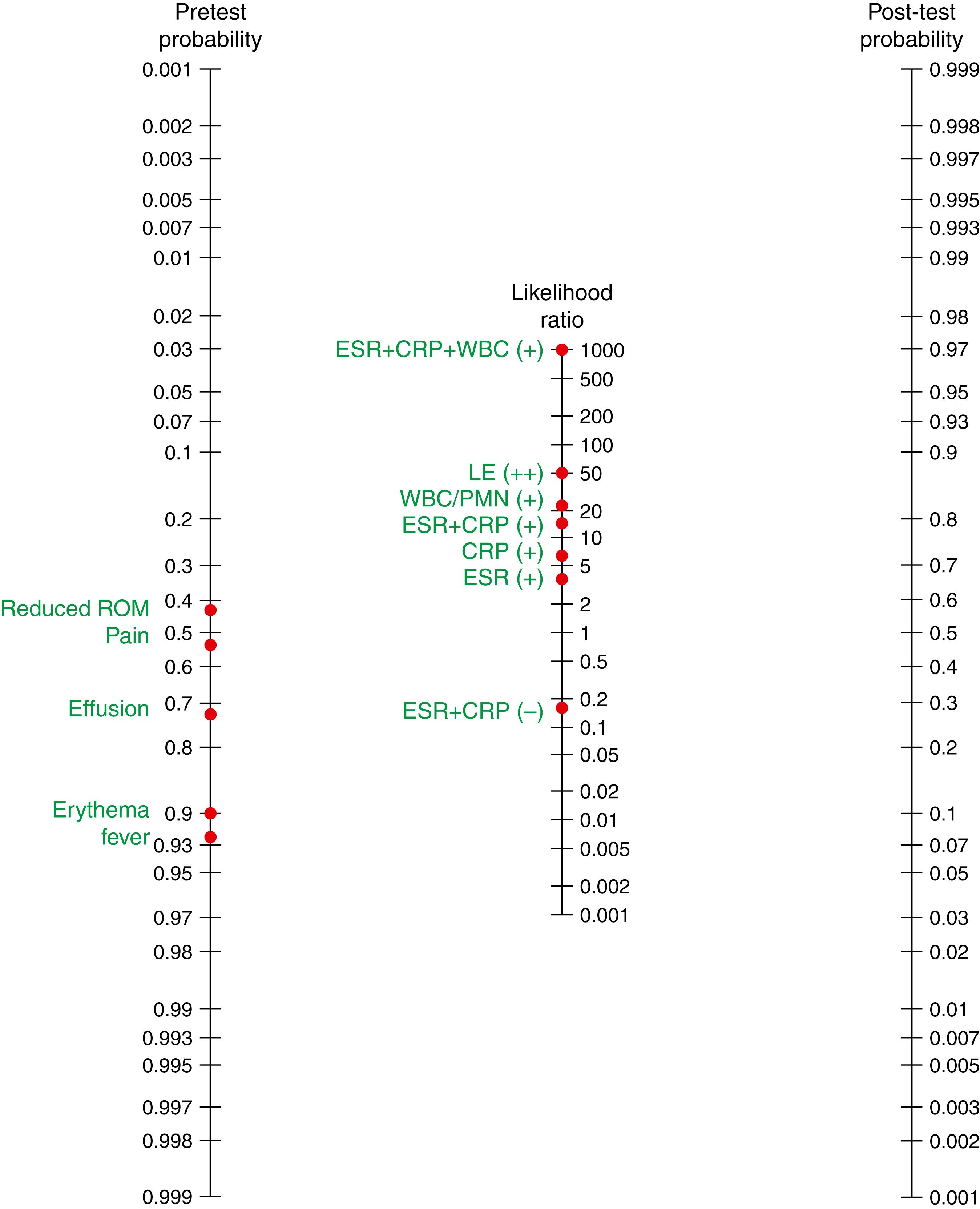Physical Address
304 North Cardinal St.
Dorchester Center, MA 02124
While total joint arthroplasty (TJA) is considered a relatively safe procedure, complications may arise. Periprosthetic joint infection (PJI) continues to be the leading cause of failure for primary total knee and revision total hip arthroplasty. , The number of TJAs performed in the United States is anticipated to increase significantly by the year 2030 and exceed 3.8 million annually. Consequently, associated PJIs are projected to increase from 17,000 to 266,000 during this time. , Diagnosing PJI remains a major challenge and is a critical first step in appropriate management of this condition. The lack of a single test with absolute accuracy has led organizations and institutions to propose diagnostic criteria for PJI. This chapter will focus on some of the most commonly used markers for diagnosis and describe the evolution, differences, and evidence behind various definitions for PJI.
In the absence of an absolute test for PJI diagnosis, a combination of metrics is utilized that includes surgical information, physical findings, results of various tests on serum and synovial fluid, and histologic evaluation of periprosthetic tissue. The individual diagnostic performance of each marker, and its availability and relative cost, should guide clinicians in selecting the most suitable diagnostic approach. It should also be noted that test performance may differ according to the joint assessed (hip vs. knee), the time interval from surgery, and the virulence of the infecting organism.
Clinical findings can be very helpful in the assessment of a painful joint. Frequently reported signs and symptoms of PJI are pain, joint effusion, erythema, fever, drainage, and the existence of a sinus tract communicating with the prosthesis. While all official PJI definitions consider a sinus tract as definitive evidence of PJI, , , , other clinical manifestations are less specific and compel physicians to seek further evaluation.
The International Consensus Meeting (ICM) held in 2018 raised the importance of clinical findings in evaluation of PJI. Pain is considered the most common symptom in PJI. , , In one study evaluating patients undergoing revision surgery for failed total knee arthroplasty (TKA) due to PJI and aseptic causes, over 90% of patients in both groups complained of pain, making pain alone a very nonspecific symptom. Effusion and erythema following TKA are present in a significantly higher percentage of patients with PJI compared with patients experiencing failure due to aseptic reasons. , Systemic signs such as fever and tachycardia, though less common, are more specific findings related to PJI. However, they are also the least common.
From a practical standpoint, clinical findings can be used to establish a pretest probability of a diagnosis as well as aid in the subsequent interpretation of tests ordered as applied widely across the medical profession. These differences in pretest probability may also significantly alter the post-test probability of patients who present with similar laboratory findings. , A Fagan nomogram has been proposed as a practical easy-to-use tool to aid in the interpretation of clinical findings, taking into account serum and synovial fluid marker results ( Fig. 26.1 ).

Become a Clinical Tree membership for Full access and enjoy Unlimited articles
If you are a member. Log in here